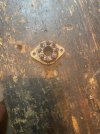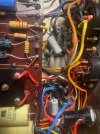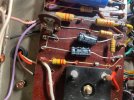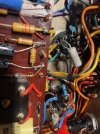This is the schematics I use for my '69 1986 (JMP50). Note that this schematics shows standby switch before rectifier (AC switching), instead of after rectifier (DC switching).
I need to look closer at the pictures, difficult to follow all red wires, and some are under board.
There are some dodgy looking solder joints here and there. I would go over those again.

I need to look closer at the pictures, difficult to follow all red wires, and some are under board.
There are some dodgy looking solder joints here and there. I would go over those again.







